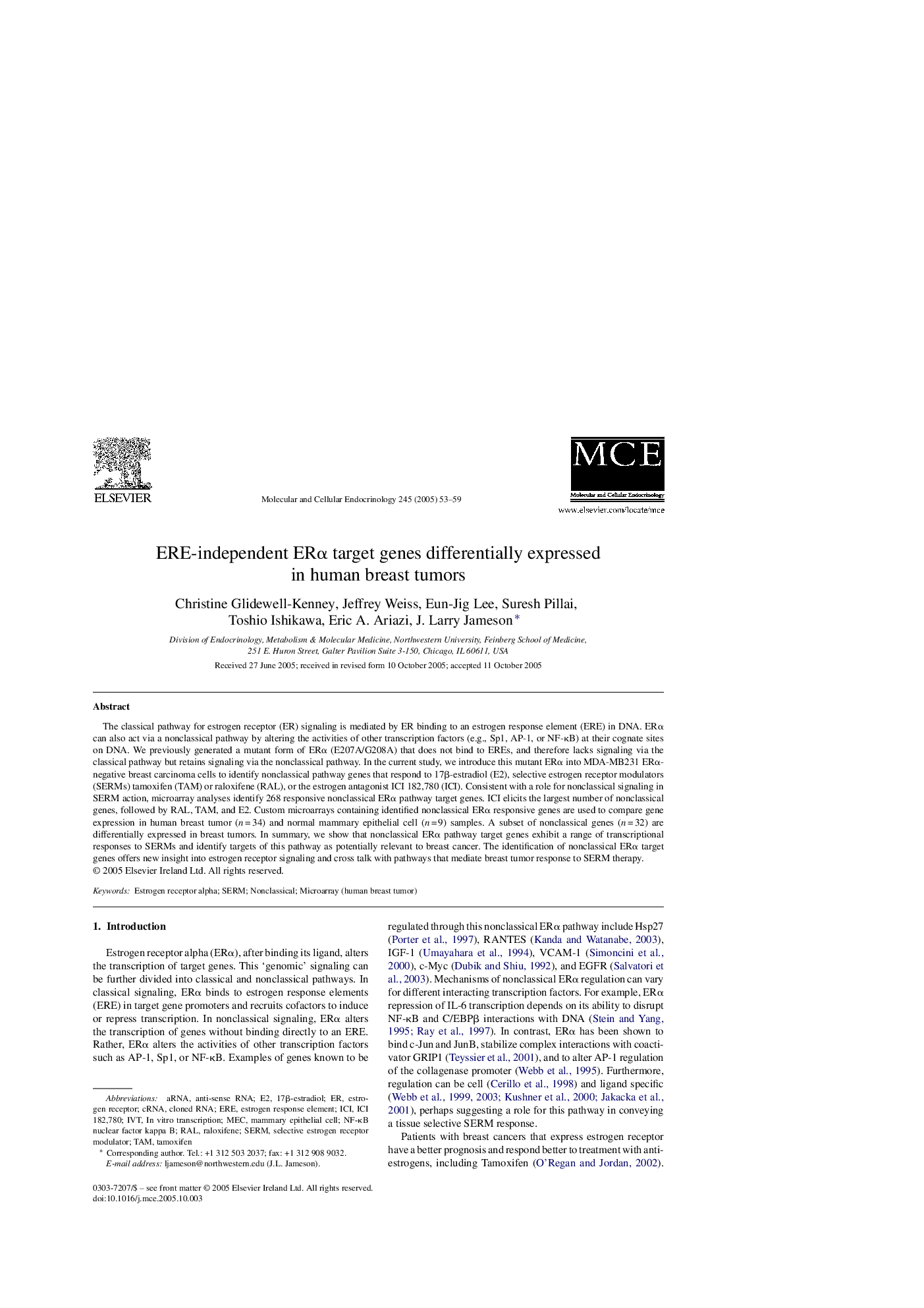| Article ID | Journal | Published Year | Pages | File Type |
|---|---|---|---|---|
| 9914855 | Molecular and Cellular Endocrinology | 2005 | 7 Pages |
Abstract
The classical pathway for estrogen receptor (ER) signaling is mediated by ER binding to an estrogen response element (ERE) in DNA. ERα can also act via a nonclassical pathway by altering the activities of other transcription factors (e.g., Sp1, AP-1, or NF-κB) at their cognate sites on DNA. We previously generated a mutant form of ERα (E207A/G208A) that does not bind to EREs, and therefore lacks signaling via the classical pathway but retains signaling via the nonclassical pathway. In the current study, we introduce this mutant ERα into MDA-MB231 ERα-negative breast carcinoma cells to identify nonclassical pathway genes that respond to 17β-estradiol (E2), selective estrogen receptor modulators (SERMs) tamoxifen (TAM) or raloxifene (RAL), or the estrogen antagonist ICI 182,780 (ICI). Consistent with a role for nonclassical signaling in SERM action, microarray analyses identify 268 responsive nonclassical ERα pathway target genes. ICI elicits the largest number of nonclassical genes, followed by RAL, TAM, and E2. Custom microarrays containing identified nonclassical ERα responsive genes are used to compare gene expression in human breast tumor (n = 34) and normal mammary epithelial cell (n = 9) samples. A subset of nonclassical genes (n = 32) are differentially expressed in breast tumors. In summary, we show that nonclassical ERα pathway target genes exhibit a range of transcriptional responses to SERMs and identify targets of this pathway as potentially relevant to breast cancer. The identification of nonclassical ERα target genes offers new insight into estrogen receptor signaling and cross talk with pathways that mediate breast tumor response to SERM therapy.
Keywords
Related Topics
Life Sciences
Biochemistry, Genetics and Molecular Biology
Cell Biology
Authors
Christine Glidewell-Kenney, Jeffrey Weiss, Eun-Jig Lee, Suresh Pillai, Toshio Ishikawa, Eric A. Ariazi, J. Larry Jameson,
